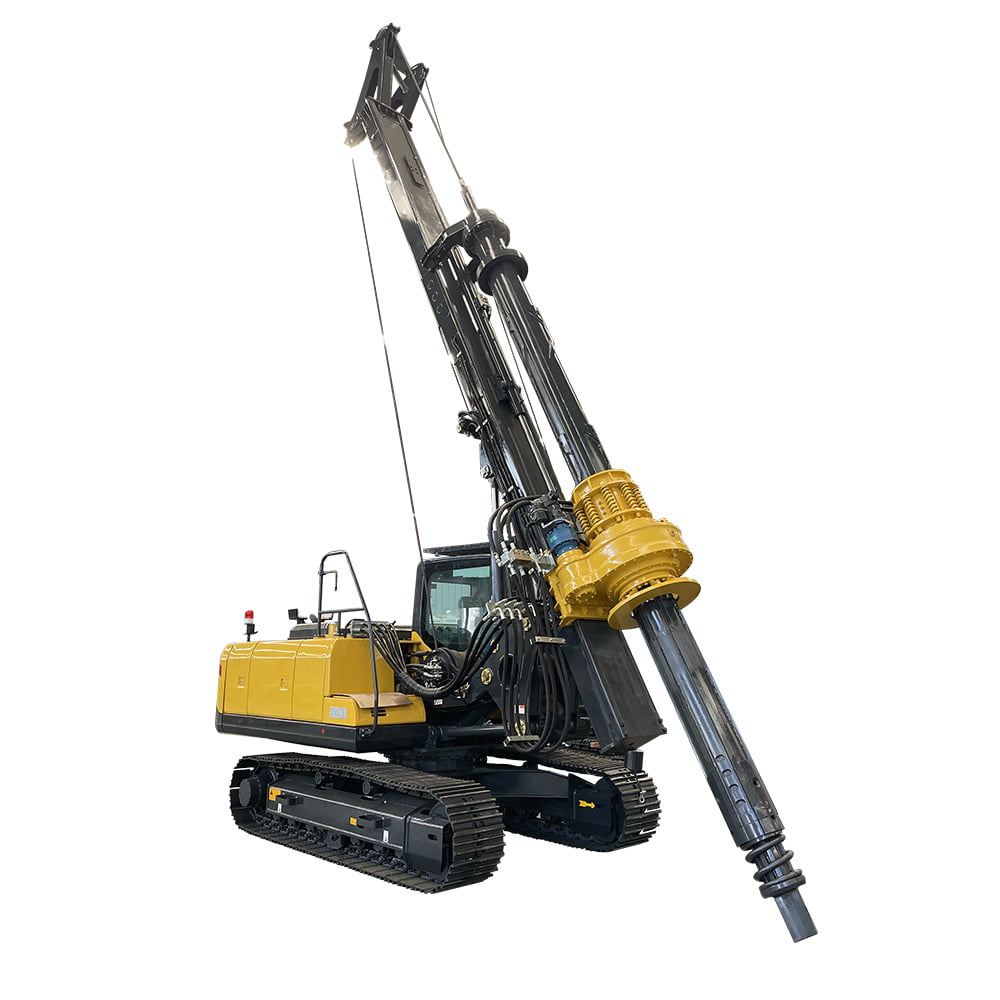Introduction

A rotary drilling rig is a type of drilling rig that uses a rotating bit to bore holes in the ground. It is a versatile piece of equipment that can be used for a variety of construction tasks, including:
- Foundations
- Pipelines
- Wells
- Geotechnical investigations
Rotary drilling rigs are becoming increasingly important in the modern construction industry. As the demand for infrastructure grows, rotary drilling rigs are being used to create more and more holes in the ground.
Types of rotary drilling rigs
There are two main types of rotary drilling rigs: top-drive rigs and bottom-drive rigs.
Top-drive rigs
Top-drive rigs have the rotating mechanism located at the top of the mast. This makes them more maneuverable than bottom-drive rigs, and they are often used in confined spaces.
Bottom-drive rigs
Bottom-drive rigs have the rotating mechanism located at the bottom of the mast. This makes them more stable than top-drive rigs, and they are often used for larger-diameter holes.
Components of a rotary drilling rig
A rotary drilling rig is a complex piece of machinery with many components. The main components include:
- Mast: The mast supports the rig’s superstructure and rotating mechanism.
- Derrick: The derrick is a tower that supports the mast.
- Rotating mechanism: The rotating mechanism spins the bit.
- Drill pipe: The drill pipe is a long, hollow tube that connects the rotating mechanism to the bit.
- Bit: The bit is the cutting tool that bores the hole.
How a rotary drilling rig works
A rotary drilling rig works by using the rotating mechanism to spin the bit. The bit cuts into the ground, creating a hole. The drill pipe is used to transmit the rotation from the rotating mechanism to the bit.
The type of bit used depends on the type of material being drilled. For example, a rock bit is used for drilling through rock, while a soil bit is used for drilling through soil.
Applications of rotary drilling rigs

Rotary drilling rigs are used for a variety of construction tasks, including:
- Foundations: Rotary drilling rigs are used to create holes for foundations, such as for buildings, bridges, and roads.
- Pipelines: Rotary drilling rigs are used to create holes for pipelines, such as for water, oil, and gas.
- Wells: Rotary drilling rigs are used to create holes for wells, such as for water, oil, and gas.
- Geotechnical investigations: Rotary drilling rigs are used to create holes for geotechnical investigations, such as to test the soil or rock conditions.
Conclusion
Rotary drilling rigs aren’t just important cogs in the construction machine; they’re the versatile masters of earth-piercing precision. Beyond simply being “used for a variety of tasks,” these marvels of engineering finesse carve intricate pathways for modern civilization’s arteries. Foundations for towering skyscrapers wouldn’t anchor against gravity without their meticulous boreholes. Pipelines snaking across vast landscapes, carrying lifeblood fluids of water, oil, and gas, owe their existence to the relentless churn of a rotary bit. Wells reaching deep into the earth’s thirsty core, quenching our need for sustenance and fueling our technological engines, are testaments to these rigs’ unwavering purpose.
And as the insatiable thirst for infrastructure expands, so too does the reliance on rotary drilling rigs. Imagine sprawling networks of high-speed rail slicing through continents, their tunnels carved by these tireless excavators. Picture colossal bridges arcing across mighty rivers, their pillars firmly rooted in the bedrock thanks to the meticulous precision of a drilling rig. Envision futuristic underwater cities bathed in artificial light, their foundations laid bare by the relentless gnawing of the bit.
FAQ
What are the advantages of rotary drilling rigs?
Rotary drilling rigs have a number of advantages, including:
- They are versatile and can be used for a variety of tasks.
- They are efficient and can bore holes quickly.
- They are safe and can be operated by a relatively small crew.
What are the disadvantages of rotary drilling rigs?
Rotary drilling rigs have a few disadvantages, including:
- They can be expensive to purchase and operate.
- They can be noisy and create vibrations.
- They can be dangerous if not operated properly.
What are the future trends for rotary drilling rigs?
As the demand for infrastructure grows, rotary drilling rigs are expected to become even more important in the construction industry. In the future, rotary drilling rigs are likely to become more efficient, safer, and environmentally friendly.






-150x150.webp)
